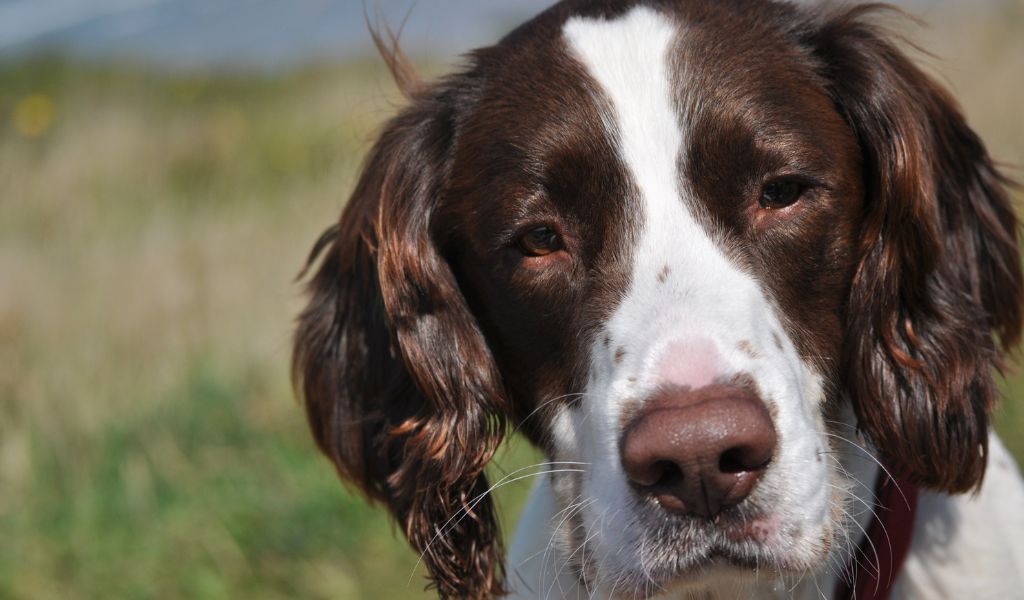If you’re considering adding a spaniel to your family, you might be wondering what the difference is between a Springer spaniel and a Cocker spaniel.
After all, they both have similar names and are both adorable, affectionate, and loyal breeds. But there are some important differences that you should be aware of before making your decision.
In this article, we’ll take a closer look at the key differences between Springer and Cocker spaniels, including their appearance, personality, health, and more.
By the end, you’ll have a better understanding of which breed is best suited for your lifestyle and preferences.
The key differences between Springer spaniels and Cocker spaniels are size and colour. Springers are normally larger than Cockers and tend to have coats that are either liver or black with areas of white. Cockers, on the other hand are between 12 to 20 kgs in weight and are mostly single coloured. Both breeds can vary between dogs that are sturdy powerhouses with broad heads and shoulders to dogs that are finer and more sleek in appearance.
Appearance
One of the most obvious differences between Springer and Cocker spaniels is their size.
Springer spaniels are generally larger and more athletic, while Cocker spaniels are smaller and more compact.
Here are some of the key differences in appearance between these two breeds:
Size:
Springer spaniels typically weigh between 50-55 pounds and stand 19-20 inches tall at the shoulder.
Cocker spaniels, on the other hand, weigh between 20-30 pounds and stand 14-15 inches tall at the shoulder.

Coat:
Both breeds have medium-length coats that are soft and silky to the touch.
However, Springer spaniels have a slightly coarser and thicker coat than Cocker spaniels.
Springers also have feathering on their legs, chest, and ears, while Cockers have a more even coat all over.
Colour:
Both breeds come in a variety of colours, including black, liver, red, and golden.
However, Springer spaniels are more likely to have a white coat with coloured markings, while Cocker spaniels are more likely to be solid-coloured.
Head shape:
Springer spaniels have a more prominent and square-shaped head, while Cocker spaniels have a more rounded and dome-shaped head.
Personality
Another important factor to consider when choosing between a Springer and Cocker spaniel is their personality.
While both breeds are known for being friendly, loyal, and affectionate, there are some differences in their temperaments that may affect your decision.
Here are some of the key differences in personality between these two breeds:
Energy level:
Springer spaniels are known for their high energy levels and love for outdoor activities like hiking, swimming, and playing fetch.
They require plenty of exercise and mental stimulation to stay happy and healthy.
Cocker spaniels are also active, but tend to be more adaptable to different living situations and can do well in apartments as long as they get enough exercise.

Trainability:
Both breeds are intelligent and eager to please, but Springer spaniels can be more challenging to train due to their high energy and stubbornness.
They require consistent and patient training to learn obedience and manners.
Cocker spaniels are generally easier to train and respond well to positive reinforcement methods.
Affection:
Both breeds are affectionate and love spending time with their humans.
However, Springer spaniels are known for being especially devoted and clingy, often following their owners from room to room.
Cocker spaniels are also loving, but tend to be more independent and can entertain themselves more easily.
Sociability:
Both breeds are generally friendly and good with children and other pets.
However, Springer spaniels may have a higher prey drive and be more inclined to chase smaller animals like cats and squirrels.
Cocker spaniels, on the other hand, tend to be more gentle and may be better suited for households with small children.
Health
When it comes to health, both Springer and Cocker spaniels are prone to certain conditions that are common in their breed.
It’s important to be aware of these potential health issues so you can provide proper care and catch any problems early on.
Here are some of the most common health concerns for both breeds:
Hip dysplasia:
This is a condition where the hip joint doesn’t develop properly, leading to pain and mobility issues.
Both Springer and Cocker spaniels are prone to hip dysplasia, so it’s important to get regular check-ups and x-rays to monitor their joint health.
Ear infections:
Spaniels have long, floppy ears that can trap moisture and bacteria, leading to ear infections. Regular ear cleaning and grooming can help prevent this issue.
Eye problems:
Both breeds are prone to several eye conditions, including cataracts, glaucoma, and retinal atrophy. Regular eye exams can help catch these issues early and prevent vision loss.
Obesity:
Spaniels love to eat and can easily become overweight if they don’t get enough exercise and a balanced diet. Maintaining a healthy weight is important for their overall health and longevity.
FAQs
Q: Can Springer and Cocker spaniels live in apartments?
A: While Springer spaniels may have a harder time adjusting to apartment living due to their high energy levels, both breeds can live in apartments as long as they get enough exercise and mental stimulation.
Q: Which breed is better for families with children?
A: Both breeds are generally good with children, but Cocker spaniels may be better suited for households with small children due to their gentler and more adaptable nature.
Q: Are spaniels good with other pets?
A: Yes, both Springer and Cocker spaniels are generally good with other pets, including cats and other dogs. However, Springer spaniels may have a higher prey drive and be more inclined to chase smaller animals.
Conclusion
In conclusion, while Springer and Cocker spaniels may share some similarities, there are some important differences to consider when choosing between the two breeds.
Springer spaniels are larger, more energetic, and may require more training, while Cocker spaniels are smaller, more adaptable, and may be better suited for families with small children.
Both breeds are loving, loyal, and make excellent companions for the right owner.
By understanding the differences between these two breeds, you can make an informed decision and find the perfect spaniel for your lifestyle and preferences.

